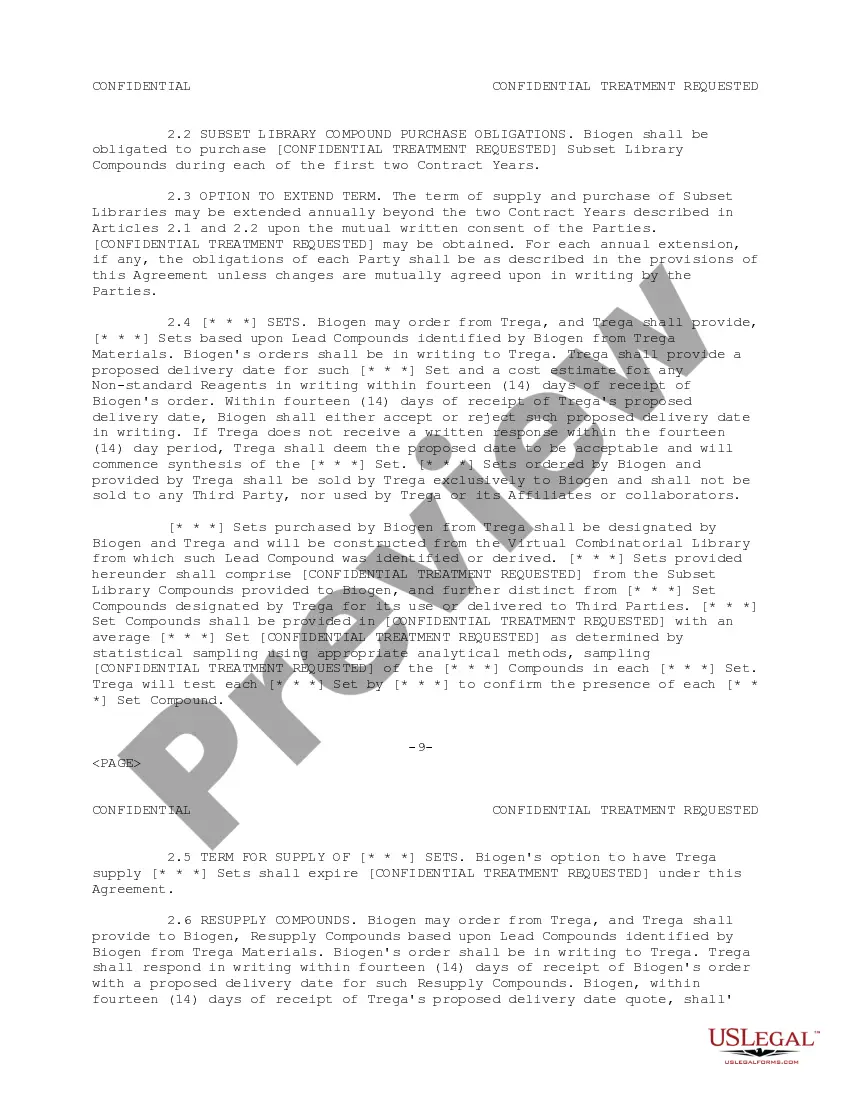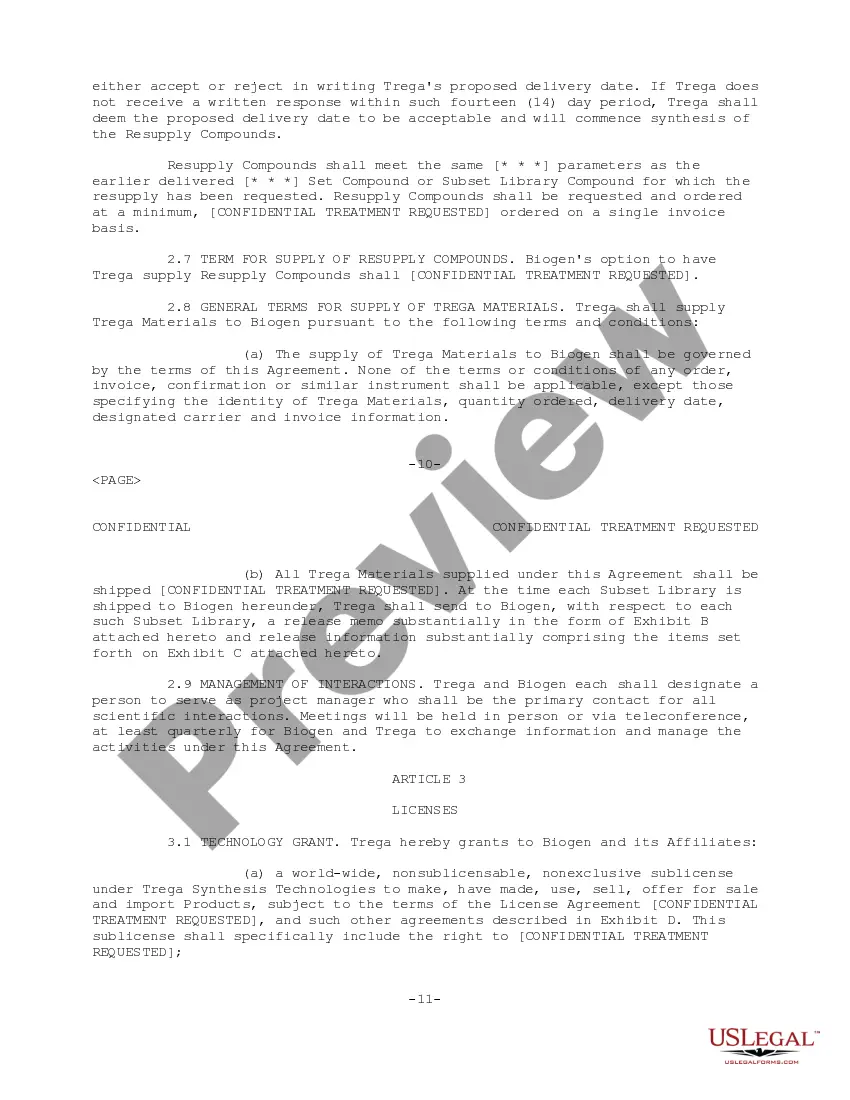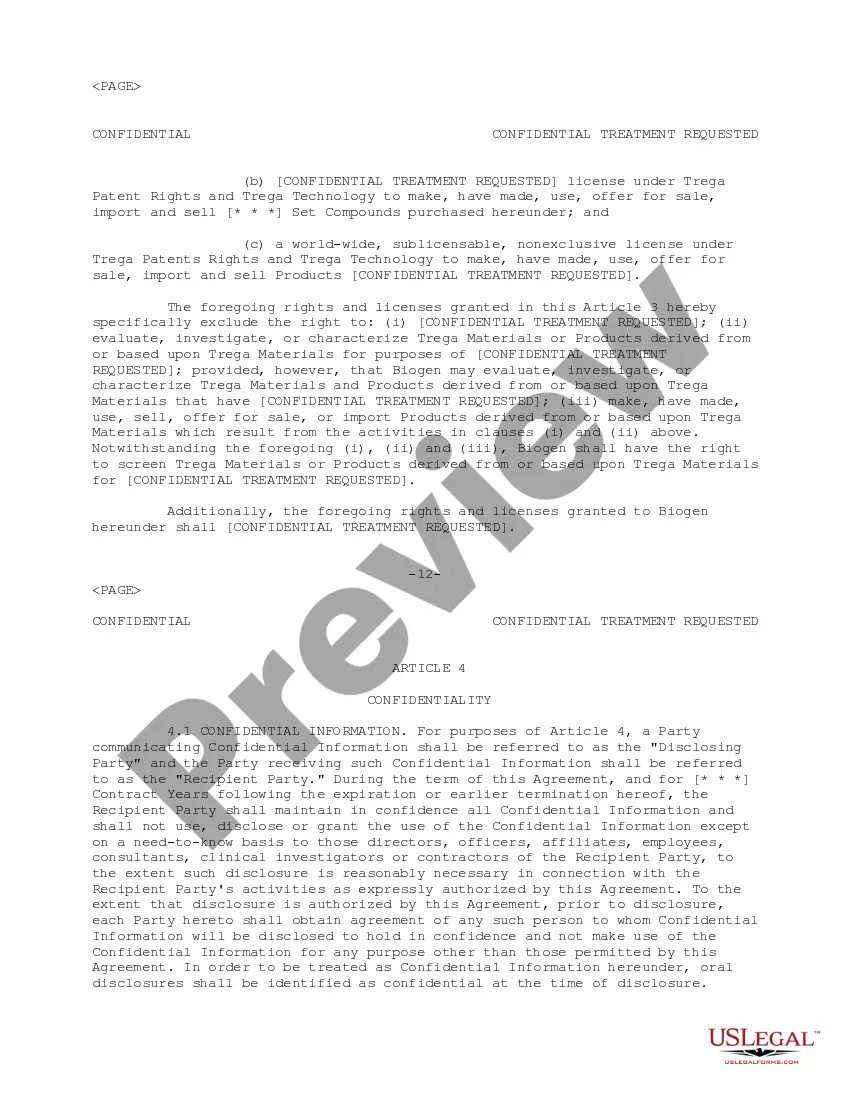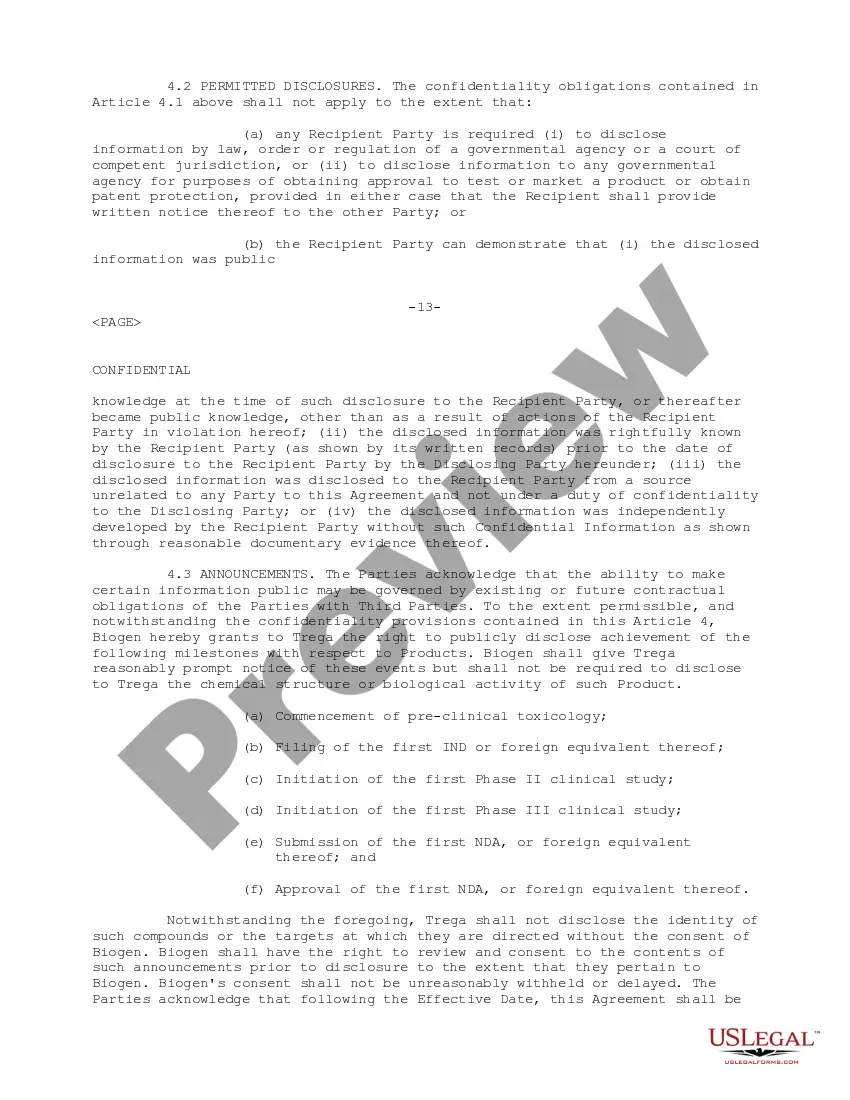Vermont Library Supply and Sublicense Agreement: A Comprehensive Explanation The Vermont Library Supply and Sublicense Agreement is a legal contract that outlines the relationship between a library and the supplier of library materials and services in the state of Vermont, United States. This agreement is crucial for ensuring the uninterrupted functioning and provision of essential library resources to the community. Under this agreement, the library enters into a contractual arrangement with a library supply company, usually specializing in the procurement and distribution of various library materials such as books, journals, reference materials, multimedia resources, and library technology solutions. The agreement defines the terms and conditions under which the library can access a wide range of library supplies and services provided by the supplier. Here are some keywords that help illustrate the nature and importance of the Vermont Library Supply and Sublicense Agreement: 1. Library Supplies: The agreement encompasses all the physical materials required by libraries to support their educational, informational, and recreational needs. It includes books, periodicals, magazines, CDs, DVDs, e-books, databases, and other resources required by library patrons. 2. Sublicense: The agreement allows the library to sublicense the materials it acquires from the supplier. This means that the library can extend access to these materials to its patrons under specific conditions, ensuring compliance with copyright laws and intellectual property rights. 3. Vendor Selection: The agreement may specify the process by which the library selects a particular supplier. This ensures that the library has a reliable and reputable partner for acquiring its library supplies and services. 4. Pricing and Payment Terms: The agreement outlines the pricing structure for the library materials and services, ensuring transparency in financial transactions. It may mention the payment schedule, discounts, and any additional charges involved. 5. Delivery and Distribution: The agreement specifies the logistics and timelines for the delivery of library supplies. It may outline the responsibilities of both the supplier and the library in ensuring timely and accurate delivery. Different types or variations of Vermont Library Supply and Sublicense Agreements may exist, tailored to specific library needs and requirements. These can include: 1. Physical Materials Agreement: This focuses on the procurement and supply of physical library resources such as books, magazines, and multimedia materials. 2. E-resources Agreement: This primarily covers the licensing and distribution of electronic resources, including e-books, online databases, and digital media. 3. Integrated Library System (ILS) Agreement: This agreement involves the acquisition and implementation of a comprehensive library management system, encompassing cataloging, circulation, OPAC (Online Public Access Catalog), and other crucial functionalities. In conclusion, the Vermont Library Supply and Sublicense Agreement plays a vital role in ensuring libraries in Vermont have access to a wide range of resources to meet the community's educational, informational, and recreational needs. It establishes a legal framework that governs the relationship between libraries and suppliers, ensuring efficient procurement, delivery, and sublicensing of library materials and services.
Vermont Library Supply and Sublicense Agreement
Description
How to fill out Vermont Library Supply And Sublicense Agreement?
It is possible to devote several hours on-line looking for the lawful record format that suits the federal and state needs you need. US Legal Forms gives a large number of lawful forms that are analyzed by specialists. You can easily acquire or print the Vermont Library Supply and Sublicense Agreement from your assistance.
If you already possess a US Legal Forms accounts, you are able to log in and then click the Download key. Afterward, you are able to full, modify, print, or indication the Vermont Library Supply and Sublicense Agreement. Every single lawful record format you buy is yours eternally. To obtain an additional version of the purchased form, check out the My Forms tab and then click the corresponding key.
Should you use the US Legal Forms website initially, follow the simple recommendations listed below:
- First, make sure that you have chosen the correct record format for that county/city of your choosing. Read the form outline to ensure you have picked out the appropriate form. If offered, make use of the Preview key to look from the record format at the same time.
- If you wish to locate an additional model of your form, make use of the Look for industry to find the format that meets your requirements and needs.
- After you have found the format you want, click on Get now to continue.
- Find the costs prepare you want, type your credentials, and sign up for a merchant account on US Legal Forms.
- Comprehensive the transaction. You can utilize your credit card or PayPal accounts to cover the lawful form.
- Find the formatting of your record and acquire it to your gadget.
- Make modifications to your record if needed. It is possible to full, modify and indication and print Vermont Library Supply and Sublicense Agreement.
Download and print a large number of record layouts utilizing the US Legal Forms website, that offers the greatest selection of lawful forms. Use skilled and state-distinct layouts to handle your company or person requires.





















